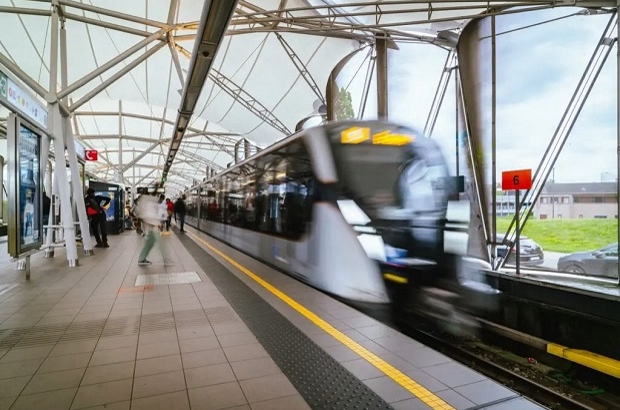- Daily & Weekly newsletters
- Buy & download The Bulletin
- Comment on our articles
Stib celebrates its 70th anniversary looking to the future while reflecting on its long history
When Stib blew out 70 birthday candles on 1 January, the anniversary was a moment to reflect on the long history of public transport in Brussels.
From horse-drawn coaches and wartime wagon requisitions to carriages fit for a king, the network has experienced a roller coaster evolution.
It was officially founded at the beginning of 1954 when the Belgian state, province of Brabant and 21 city municipalities formed the new company Société des Transports Intercommunaux de Bruxelles (STIB).
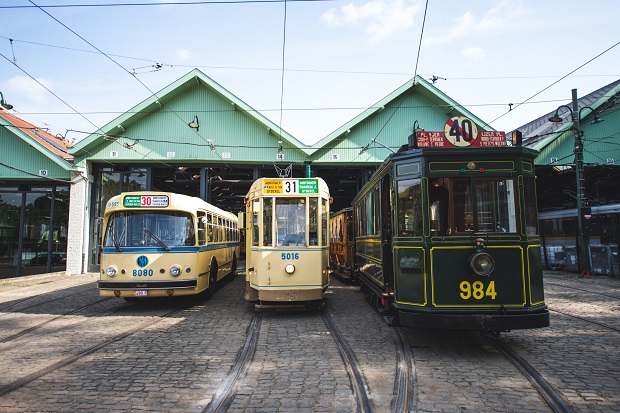
A year later, it took over the capital’s buses with the first one running between Place Bockstael and Midi station. Many more lines were to follow to complement the tram network, which celebrates its 155th anniversary in 2024.
The history of public transport in the capital can be traced back to the arrival of the railway in Belgium in 1835. The country was the first in continental Europe to open a rail line; the inaugural service connecting Brussels with Mechelen.
For the first time, the general public had the opportunity to travel as horses and private carriages were the realm of the wealthy few. Brussels was rapidly growing and people also needed to move around more quickly. Omnibus companies sprang up to meet the demand with horse-drawn vehicles circulating along different lines, linking up the city’s train stations.
With Brussels’ cobbled streets proving problematic, electric trolley trams were introduced in 1869, albeit still reliant partly on horse power. The first line ferried passengers between Porte de Namur and the green recreation space of Bois de la Cambre. An interesting anecdote, reveals Stib, is that the electric tram was pioneered in New York by engineer Charles Van de Poele, a Belgian immigrant.
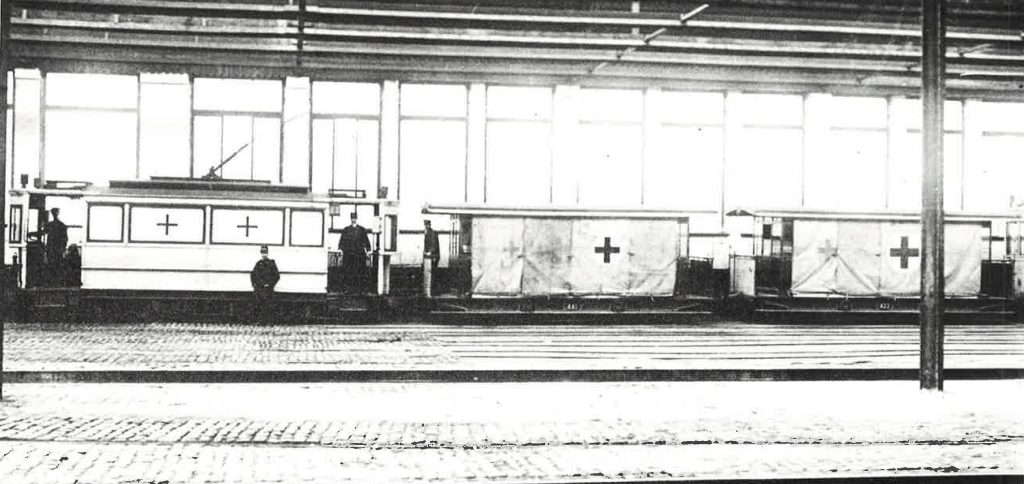
Some 20 years later in Brussels, steam-powered trams were a familiar sight, along with stylish gleaming carriages. The first electric tram arrived in 1903 before the network was completely electrified in 1921, and horses finally decommissioned.
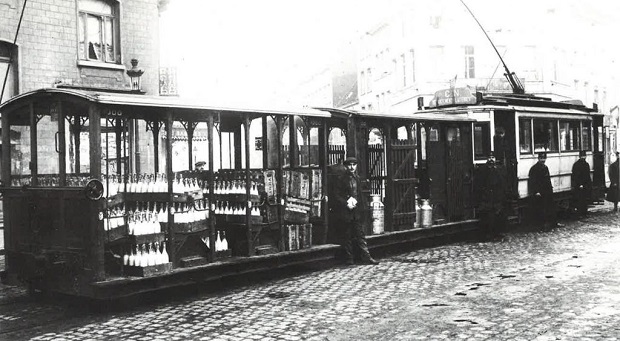
World War One was a period of major upheaval and massive shortages. Trams took over the daily milk delivery of milk as well as transporting the wounded, food supplies, removing rubbish and even serving as hearses (pictured above). With horses requisitioned for efforts at the front, tram companies resorted to river transport or bovine traction to move their equipment around the city.
The second world war was another era of hardship with Brussels suffering occupation (staff, pictured below). Thanks to technological wartime advances, buses entered the service in the 50s, although trams were still enjoying their heyday. Following the creation of STIB, bus lines proliferated and several tram tunnels were built. Brussels’ hosting of world fair Expo 58 was an excellent opportunity to enlarge the city’s transport system.
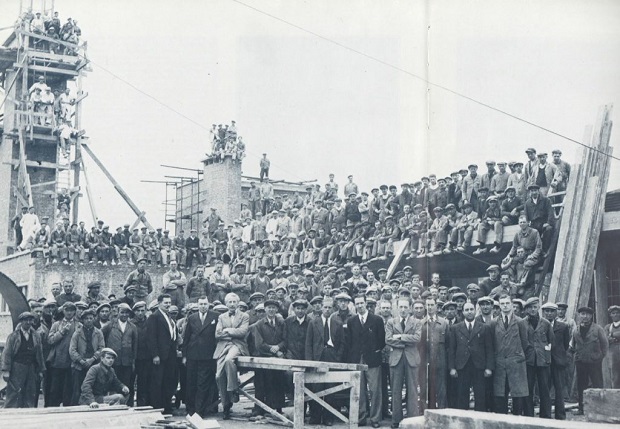
During the 1960s, buses were cheaper and easier to operate than trams. Meanwhile, private cars were filling streets. In a bid to remain competitive, Stib started exploring below the surface, reviving abandoned plans for an underground tram network. Work started on the pre-metro around Schuman roundabout, employing miners from Limburg and Wallonia whose livelihoods were otherwise threatened by the collapse of the coalmining industry.
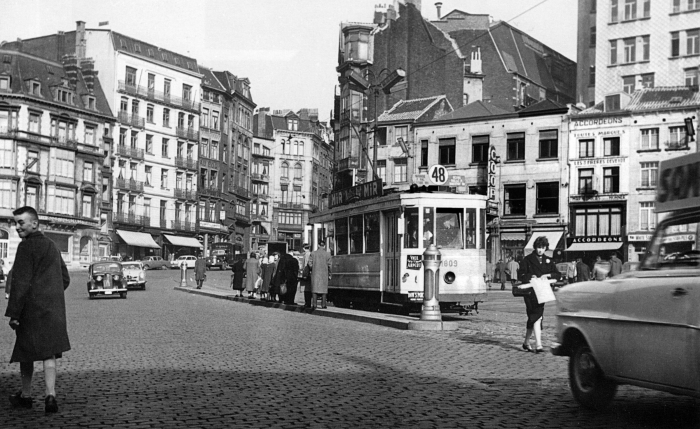
The decade was also marked by major restructuring of the network by Stib, resulting in numerous line closures. Passenger traffic dropped by 12.5%, although it would later pick up. At the end of 1969, King Baudouin inaugurated the first section of the pre-metro east-west line. It comprised six stations: Schuman, Maelbeek, Arts Loi, Parc, Central Station, De Brouckère and an above ground terminus at Place Sainte-Catherine. A year later, the service was extended to four stations between Madou and Porte de Namur.
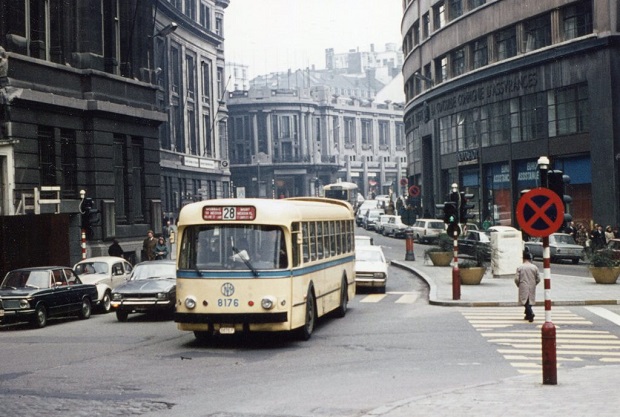
The introduction of newer and bi-directional vehicles in the 1970s speeded up the system. Finally, the metro opened with considerable fanfare in 1972, drawing crowds not seen since Belgium’s wartime liberation. The 11km line ran from De Brouckère to Merode before separating into two lines (now Hermann-Debroux and Stockel).
But the cost of building the metro, coupled with plummeting passenger numbers, led to the Belgian state buying out the remaining private shares held by the Tramways bruxellois in 1978. Stib was now fully in the hands of the public authorities.
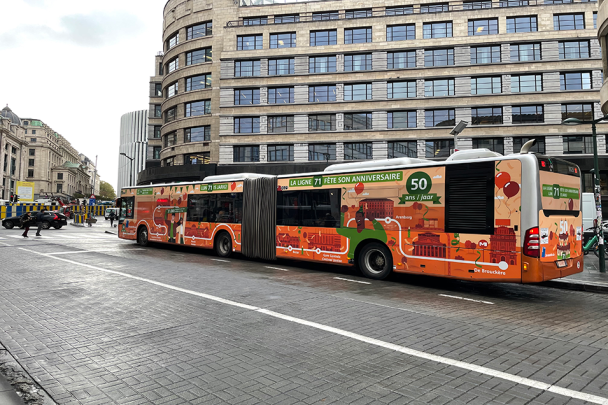
Another important historical moment was the metro line diving under the canal in 1981 to connect to Comte de Flandre, Etangs Noirs and Beekkant stations. It was a risky operation that was repeated to extend the service to Place Sainctelette.
Further expansion ensued before the Stib came under regional control in 1989. This was accompanied by a new image, including canary yellow livery and the adoption of a new logo – the now familiar blue rectangle with a red base, set at an incline of 12.5° to represent the angle of a runner’s back.
New buses were introduced in the 1990s – fitted with natural gas engines, along with traffic information improvements for passengers, the appearance of electric trams and the extension of the metro to Heysel.
The arrival of the 21st century led to further overhauls, a move to hybrid vehicles, additional lines, and a new generation of Art Nouveau style trams in the now familiar gold and silver colours. Along the way, ticketing and subscriptions became streamlined and digital.
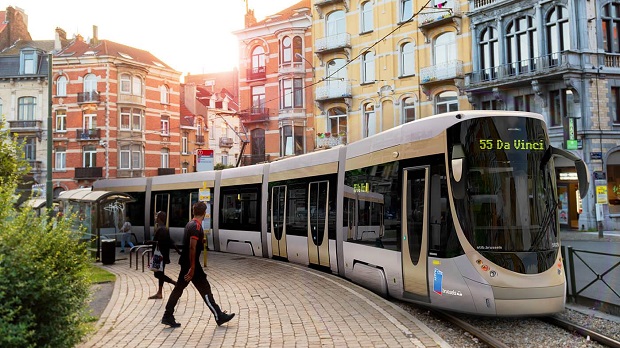
Fast forward to 2024 and the network boasts four metro lines, 18 tram lines spread over 150 kms and 55 bus lines. Challenges persist, in particular with the long-awaited north-south metro line. But new tram lines are in the pipeline, including tram 10 to Neder-Over-Heembeek and a service to Tour & Taxis.
So as Stib looks to its future, not only is it counting on the role that public transport plays in forging sustainable mobility, it will be reflecting on its long history of setting ambitious goals and overcoming challenges.
Photos: (main image) Erasme station ©Samyn and partners; Tram Museum, Woluwe; ambulance wagons; tram milk delivery; staff during occupation at Cureghem, 9 September 1942; Place Liedts ©archives de Schaerbeek; bus line 28; 50th anniversary; Tram 55, photos ©STIB











